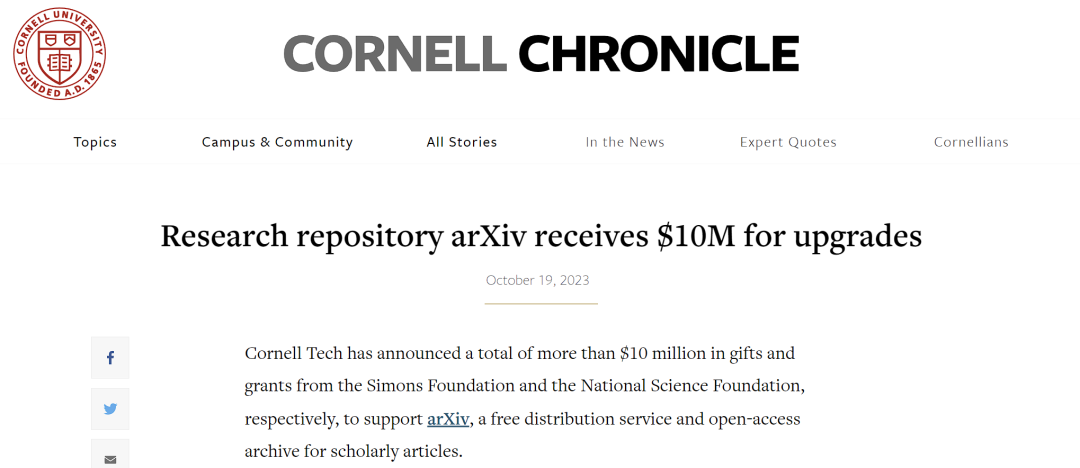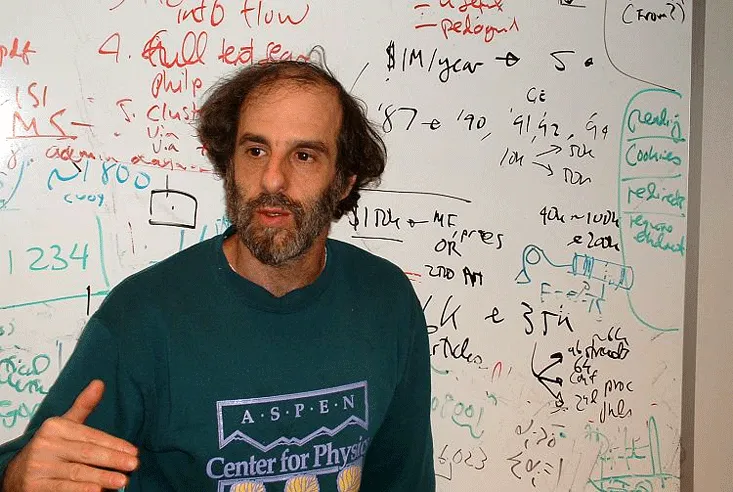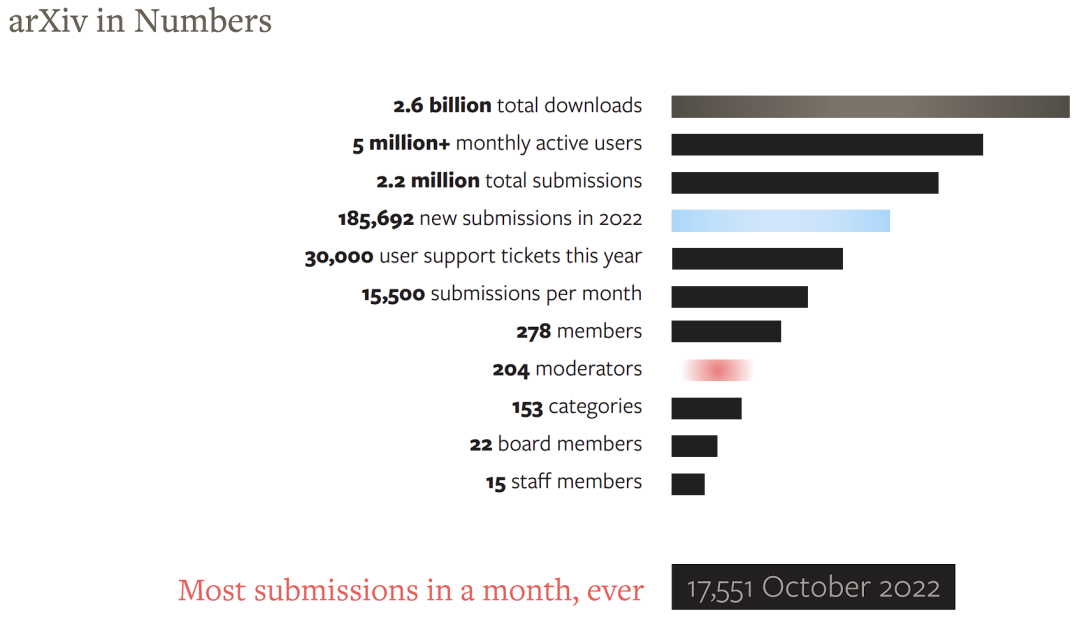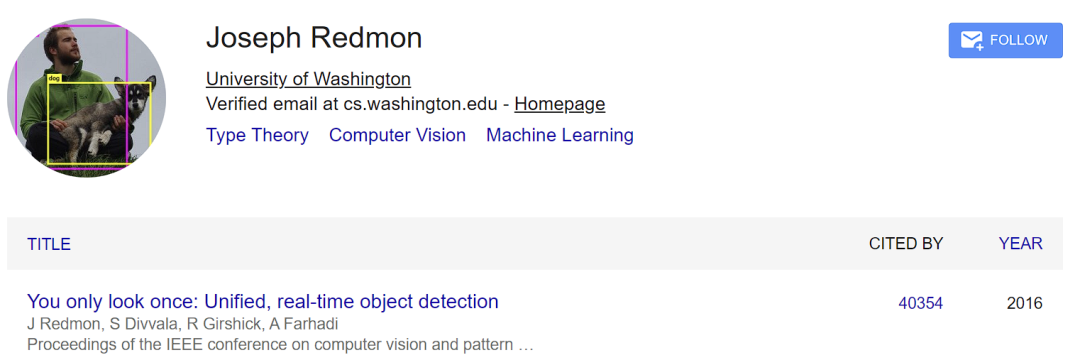 Technology peripherals
Technology peripherals
 AI
AI
 Received a donation of US$10 million for code refactoring and cloud migration, and the paper preprint platform arXiv 'is getting better'
Received a donation of US$10 million for code refactoring and cloud migration, and the paper preprint platform arXiv 'is getting better'
Received a donation of US$10 million for code refactoring and cloud migration, and the paper preprint platform arXiv 'is getting better'
Let’s move to the cloud and refactor the code together.
For the increasingly fast-paced academic research field, arXiv is a very important paper preprint platform. Like Wikipedia, it is a non-profit organization.
On Thursday local time, Cornell Tech announced the good news that arXiv has received a huge donation.

As a nonprofit database, arXiv is free and accessible to all and has long relied on donations. Cornell Tech announced that the Simons Foundation and the National Science Foundation (NSF) have awarded grants totaling more than $10 million to support arXiv.
According to reports, the funding will enable this research repository with more than 2 million papers to move to the cloud and modernize its code to ensure higher levels of reliability, fault tolerance and availability. Accessibility.
In a few days, we should be able to load PDFs on arXiv faster, and perhaps we can read papers directly on the web page.
“I am deeply grateful to the Simons Foundation and the National Science Foundation for their tremendous support,” said Greg Morrisett, the Jack and Leila Nefsey Dean and Vice Provost of Cornell Tech. "This investment ensures that the arXiv service continues to scale, serve a broader audience, and better serve the scientific community."
Ramin Zabih, professor of computer science at Cornell Tech Campus, said: "Through By modernizing the code base and transitioning to the cloud, we are strengthening arXiv's infrastructure and ensuring it continues to be a source of innovation in sharing scholarly publications."
arXiv (pronounced "archive") on It was founded in 1991 by Dr. Paul Ginsparg, then a physicist at Los Alamos National Laboratory, who wanted to catalog about 100 research papers. As papers poured in, he tried to solve the problem with the help of a computer program, which he reportedly learned how to write "by attending machine learning seminars for more than a decade."

Ginsparg is now a professor of physics and information science at Cornell University.
The paper platform is now maintained and operated by Cornell University Libraries. It is a huge repository of preprints of academic papers, collecting published and large quantities that have not yet undergone the peer review process. , or articles not intended for publication in refereed journals.
Currently, the sub-disciplines covered by arXiv include multiple fields of natural sciences and social sciences, including physics, mathematics, computer science, quantitative biology, quantitative finance, statistics, electrical engineering and economics. As of the end of 2022, there have been more than 2.2 million submissions on arXiv.

Due to the great appeal of arXiv, researchers in many fields will "publish" their latest research results in advance before being accepted by academic conferences or journals. to this platform. Generally people think that the benefits of doing this lie in "taking advantage of" and publicity: they can not only protect their own ideas, but also expand publicity and enhance the scholar's own influence. At the same time, this approach also greatly speeds up the dissemination of information in the academic community.
In contrast, even in today's fast-paced AI field, it takes months to wait for conference or journal papers from submission to final visibility, and sometimes new directions have even emerged during this period. .
As a result, arXiv has gradually become the preferred "submission" place for many academic fields, such as mathematics and computer science. Today, frequent browsing of arXiv has become a habit for many scholars. In the field of artificial intelligence, many articles included in top conferences such as NeurIPS, CVPR, and AAAI have been posted on arXiv in advance to gain exposure. On the other hand, because it does not have a very effective screening mechanism, there are also many lower-quality papers on the platform. This may be the direction arXiv tries to change after receiving new funding.
Most of the time, whether it is accepted by an important journal conference is an important criterion for evaluating the quality of a paper. However, after the emergence of arXiv, many papers that were missed by the conference have exerted an important influence in the academic world and received many citations. In the field of artificial intelligence, we can easily list some well-known articles that appeared on arXiv but were rejected by top AI conferences, such as research on YOLO, transformer XL, and Dropout.
YOLO, a well-known target detection algorithm in the field of computer vision, has had more than 40,000 citations in its paper. However, it was originally rejected by NIPS and was later submitted to CVPR 2016 and was accepted.

In 2012, the later Turing Award winner Geoffrey Hinton proposed Dropout in the paper "Improving neural networks by preventing co-adaptation of feature detectors". In the same year, the emergence of AlexNet opened a new era of deep learning. AlexNet used Dropout to significantly reduce overfitting and played a key role in its victory in the ILSVRC 2012 competition. It can be argued that without Dropout, the great development of deep learning may be delayed by several years.
However, this paper was rejected by NIPS 2012 and is still in preprint status on arXiv.

What will the arXiv platform, which carries the hope of advanced science, develop into in the future?
Cornell University said the next phase of arXiv development will include hiring additional software developers to support modernization efforts. At the same time, computer science faculty will develop new search and recommendation technologies with NSF funding that are planned to support arXiv's large user community and will be backed by state-of-the-art privacy guarantees. In addition, arXiv will provide better access for the visually impaired by generating HTML and PDF versions of the content.
The $10 million in funding will significantly increase arXiv’s capabilities. By comparison, arXiv spent a total of $2.42 million in 2021.
After the news of the donation was released, people applauded and looked forward to the future evolution of the preprint platform.

Reference content:
##https://news.cornell. edu/stories/2023/10/research-repository-arxiv-receives-10m-upgrades
##https://news.ycombinator.com/item?id =37949656
https://medium.com/nautilus-magazine/what-counts-as-science-76ebd1f5d403
The above is the detailed content of Received a donation of US$10 million for code refactoring and cloud migration, and the paper preprint platform arXiv 'is getting better'. For more information, please follow other related articles on the PHP Chinese website!

Hot AI Tools

Undresser.AI Undress
AI-powered app for creating realistic nude photos

AI Clothes Remover
Online AI tool for removing clothes from photos.

Undress AI Tool
Undress images for free

Clothoff.io
AI clothes remover

AI Hentai Generator
Generate AI Hentai for free.

Hot Article

Hot Tools

Notepad++7.3.1
Easy-to-use and free code editor

SublimeText3 Chinese version
Chinese version, very easy to use

Zend Studio 13.0.1
Powerful PHP integrated development environment

Dreamweaver CS6
Visual web development tools

SublimeText3 Mac version
God-level code editing software (SublimeText3)

Hot Topics
 1359
1359
 52
52
 DeepMind robot plays table tennis, and its forehand and backhand slip into the air, completely defeating human beginners
Aug 09, 2024 pm 04:01 PM
DeepMind robot plays table tennis, and its forehand and backhand slip into the air, completely defeating human beginners
Aug 09, 2024 pm 04:01 PM
But maybe he can’t defeat the old man in the park? The Paris Olympic Games are in full swing, and table tennis has attracted much attention. At the same time, robots have also made new breakthroughs in playing table tennis. Just now, DeepMind proposed the first learning robot agent that can reach the level of human amateur players in competitive table tennis. Paper address: https://arxiv.org/pdf/2408.03906 How good is the DeepMind robot at playing table tennis? Probably on par with human amateur players: both forehand and backhand: the opponent uses a variety of playing styles, and the robot can also withstand: receiving serves with different spins: However, the intensity of the game does not seem to be as intense as the old man in the park. For robots, table tennis
 The first mechanical claw! Yuanluobao appeared at the 2024 World Robot Conference and released the first chess robot that can enter the home
Aug 21, 2024 pm 07:33 PM
The first mechanical claw! Yuanluobao appeared at the 2024 World Robot Conference and released the first chess robot that can enter the home
Aug 21, 2024 pm 07:33 PM
On August 21, the 2024 World Robot Conference was grandly held in Beijing. SenseTime's home robot brand "Yuanluobot SenseRobot" has unveiled its entire family of products, and recently released the Yuanluobot AI chess-playing robot - Chess Professional Edition (hereinafter referred to as "Yuanluobot SenseRobot"), becoming the world's first A chess robot for the home. As the third chess-playing robot product of Yuanluobo, the new Guoxiang robot has undergone a large number of special technical upgrades and innovations in AI and engineering machinery. For the first time, it has realized the ability to pick up three-dimensional chess pieces through mechanical claws on a home robot, and perform human-machine Functions such as chess playing, everyone playing chess, notation review, etc.
 Claude has become lazy too! Netizen: Learn to give yourself a holiday
Sep 02, 2024 pm 01:56 PM
Claude has become lazy too! Netizen: Learn to give yourself a holiday
Sep 02, 2024 pm 01:56 PM
The start of school is about to begin, and it’s not just the students who are about to start the new semester who should take care of themselves, but also the large AI models. Some time ago, Reddit was filled with netizens complaining that Claude was getting lazy. "Its level has dropped a lot, it often pauses, and even the output becomes very short. In the first week of release, it could translate a full 4-page document at once, but now it can't even output half a page!" https:// www.reddit.com/r/ClaudeAI/comments/1by8rw8/something_just_feels_wrong_with_claude_in_the/ in a post titled "Totally disappointed with Claude", full of
 At the World Robot Conference, this domestic robot carrying 'the hope of future elderly care' was surrounded
Aug 22, 2024 pm 10:35 PM
At the World Robot Conference, this domestic robot carrying 'the hope of future elderly care' was surrounded
Aug 22, 2024 pm 10:35 PM
At the World Robot Conference being held in Beijing, the display of humanoid robots has become the absolute focus of the scene. At the Stardust Intelligent booth, the AI robot assistant S1 performed three major performances of dulcimer, martial arts, and calligraphy in one exhibition area, capable of both literary and martial arts. , attracted a large number of professional audiences and media. The elegant playing on the elastic strings allows the S1 to demonstrate fine operation and absolute control with speed, strength and precision. CCTV News conducted a special report on the imitation learning and intelligent control behind "Calligraphy". Company founder Lai Jie explained that behind the silky movements, the hardware side pursues the best force control and the most human-like body indicators (speed, load) etc.), but on the AI side, the real movement data of people is collected, allowing the robot to become stronger when it encounters a strong situation and learn to evolve quickly. And agile
 Li Feifei's team proposed ReKep to give robots spatial intelligence and integrate GPT-4o
Sep 03, 2024 pm 05:18 PM
Li Feifei's team proposed ReKep to give robots spatial intelligence and integrate GPT-4o
Sep 03, 2024 pm 05:18 PM
Deep integration of vision and robot learning. When two robot hands work together smoothly to fold clothes, pour tea, and pack shoes, coupled with the 1X humanoid robot NEO that has been making headlines recently, you may have a feeling: we seem to be entering the age of robots. In fact, these silky movements are the product of advanced robotic technology + exquisite frame design + multi-modal large models. We know that useful robots often require complex and exquisite interactions with the environment, and the environment can be represented as constraints in the spatial and temporal domains. For example, if you want a robot to pour tea, the robot first needs to grasp the handle of the teapot and keep it upright without spilling the tea, then move it smoothly until the mouth of the pot is aligned with the mouth of the cup, and then tilt the teapot at a certain angle. . this
 ACL 2024 Awards Announced: One of the Best Papers on Oracle Deciphering by HuaTech, GloVe Time Test Award
Aug 15, 2024 pm 04:37 PM
ACL 2024 Awards Announced: One of the Best Papers on Oracle Deciphering by HuaTech, GloVe Time Test Award
Aug 15, 2024 pm 04:37 PM
At this ACL conference, contributors have gained a lot. The six-day ACL2024 is being held in Bangkok, Thailand. ACL is the top international conference in the field of computational linguistics and natural language processing. It is organized by the International Association for Computational Linguistics and is held annually. ACL has always ranked first in academic influence in the field of NLP, and it is also a CCF-A recommended conference. This year's ACL conference is the 62nd and has received more than 400 cutting-edge works in the field of NLP. Yesterday afternoon, the conference announced the best paper and other awards. This time, there are 7 Best Paper Awards (two unpublished), 1 Best Theme Paper Award, and 35 Outstanding Paper Awards. The conference also awarded 3 Resource Paper Awards (ResourceAward) and Social Impact Award (
 Hongmeng Smart Travel S9 and full-scenario new product launch conference, a number of blockbuster new products were released together
Aug 08, 2024 am 07:02 AM
Hongmeng Smart Travel S9 and full-scenario new product launch conference, a number of blockbuster new products were released together
Aug 08, 2024 am 07:02 AM
This afternoon, Hongmeng Zhixing officially welcomed new brands and new cars. On August 6, Huawei held the Hongmeng Smart Xingxing S9 and Huawei full-scenario new product launch conference, bringing the panoramic smart flagship sedan Xiangjie S9, the new M7Pro and Huawei novaFlip, MatePad Pro 12.2 inches, the new MatePad Air, Huawei Bisheng With many new all-scenario smart products including the laser printer X1 series, FreeBuds6i, WATCHFIT3 and smart screen S5Pro, from smart travel, smart office to smart wear, Huawei continues to build a full-scenario smart ecosystem to bring consumers a smart experience of the Internet of Everything. Hongmeng Zhixing: In-depth empowerment to promote the upgrading of the smart car industry Huawei joins hands with Chinese automotive industry partners to provide
 Tested 7 'Sora-level' video generation artifacts. Who has the ability to ascend to the 'Iron Throne'?
Aug 05, 2024 pm 07:19 PM
Tested 7 'Sora-level' video generation artifacts. Who has the ability to ascend to the 'Iron Throne'?
Aug 05, 2024 pm 07:19 PM
Editor of Machine Power Report: Yang Wen Who can become the King of AI video circle? In the American TV series "Game of Thrones", there is an "Iron Throne". Legend has it that it was made by the giant dragon "Black Death" who melted thousands of swords discarded by enemies, symbolizing supreme authority. In order to sit on this iron chair, the major families started fighting and fighting. Since the emergence of Sora, a vigorous "Game of Thrones" has been launched in the AI video circle. The main players in this game include RunwayGen-3 and Luma from across the ocean, as well as domestic Kuaishou Keling, ByteDream, and Zhimo. Spectrum Qingying, Vidu, PixVerseV2, etc. Today we are going to evaluate and see who is qualified to sit on the "Iron Throne" of the AI video circle. -1- Vincent Video



